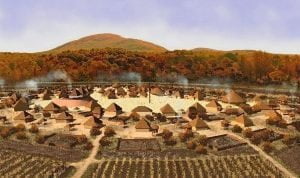West of the Alleghenies Burial Customs
The burial customs of some western Algonquian tribes were, in many respects, quite similar to those of the New England Indians. It will be recalled that soon after the Mayflower touched at Cape Cod a party of the Pilgrims went ashore and during their explorations discovered several groups of graves, some of which “had like an Indian house made over them, but not matted.” They may when erected have been covered with mats. The similarity between this early reference and the description of certain Ojibway graves, two centuries and more later, is very interesting. Writing from “American Fur Company’s trading … Read more

